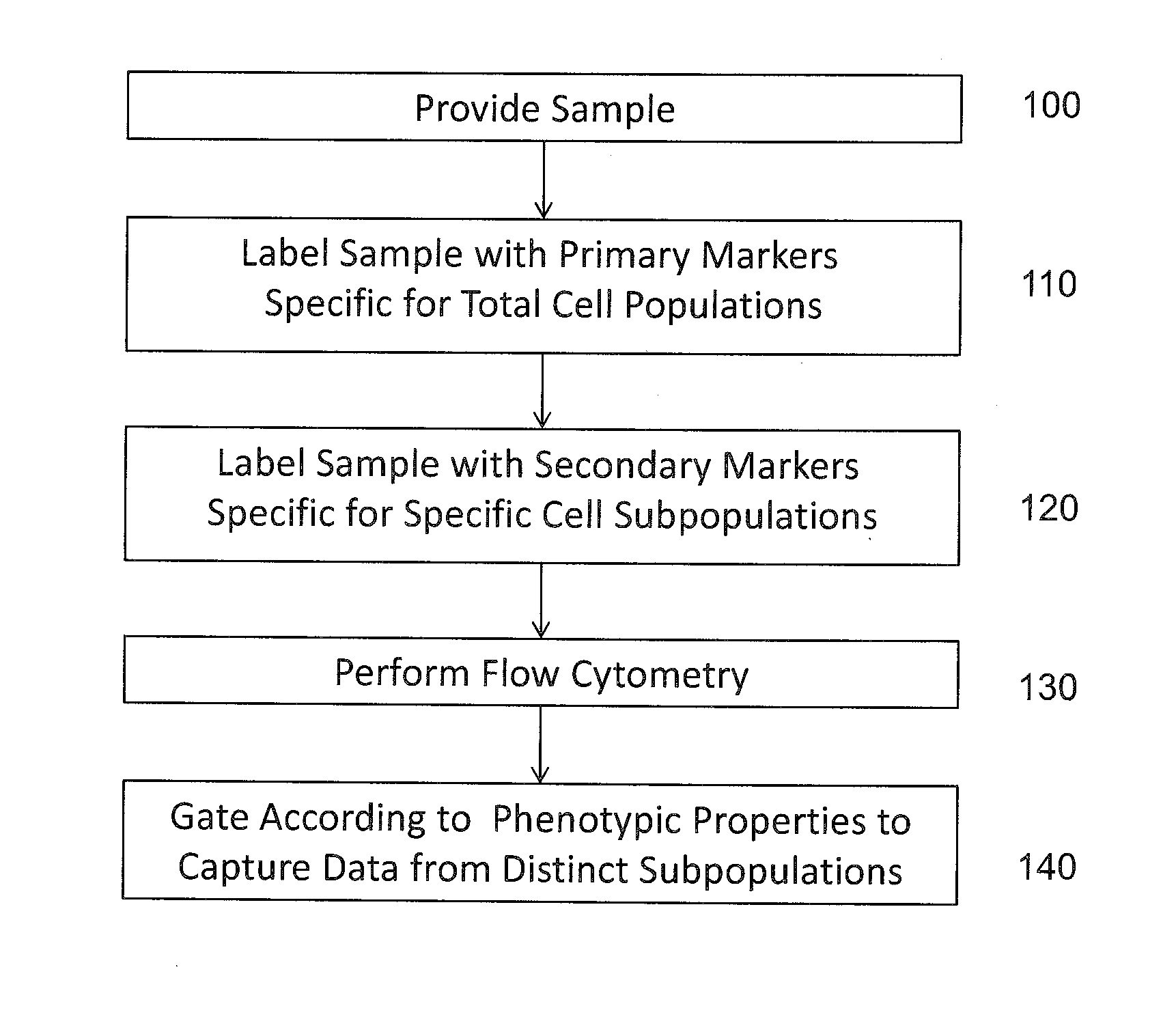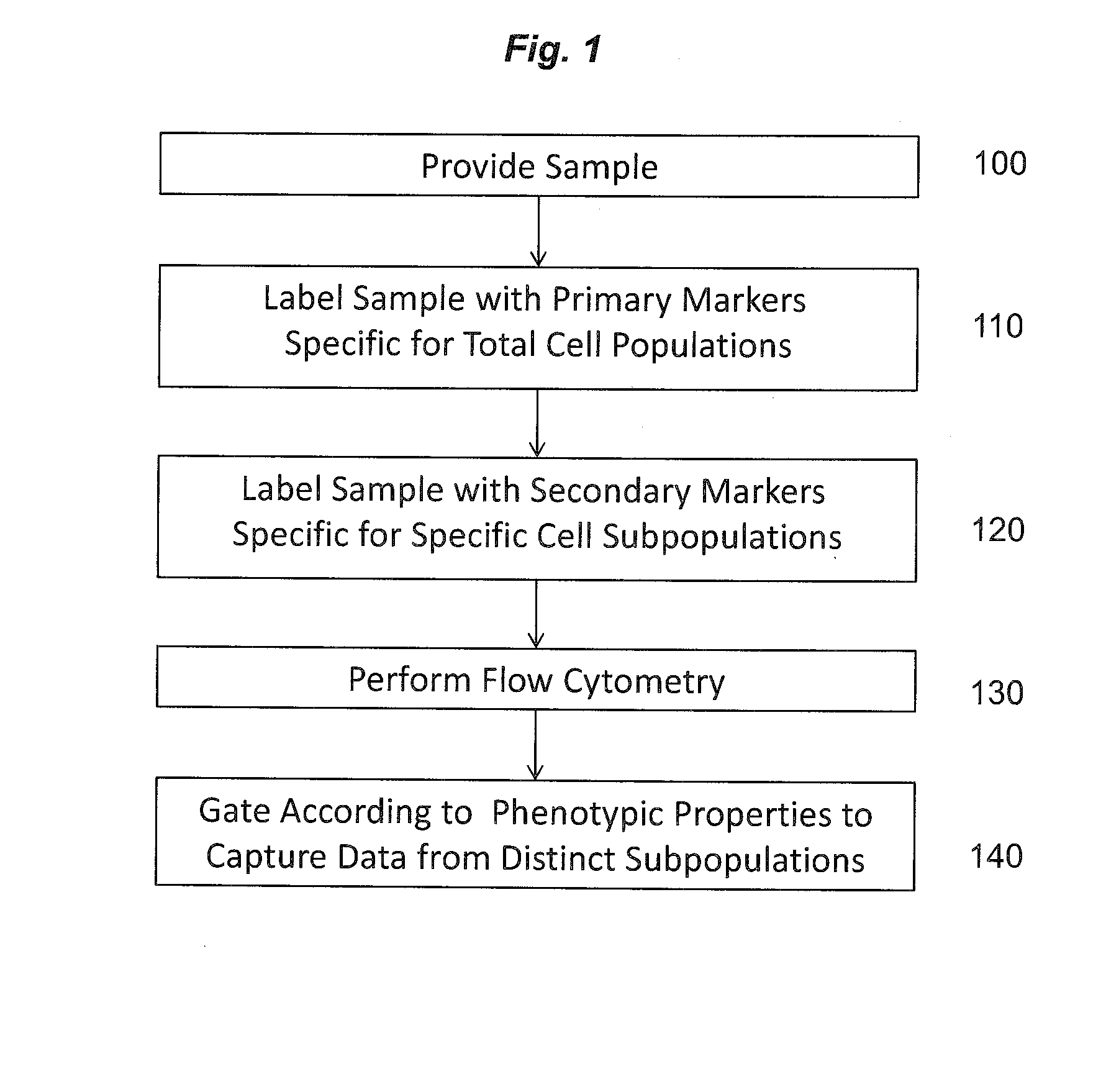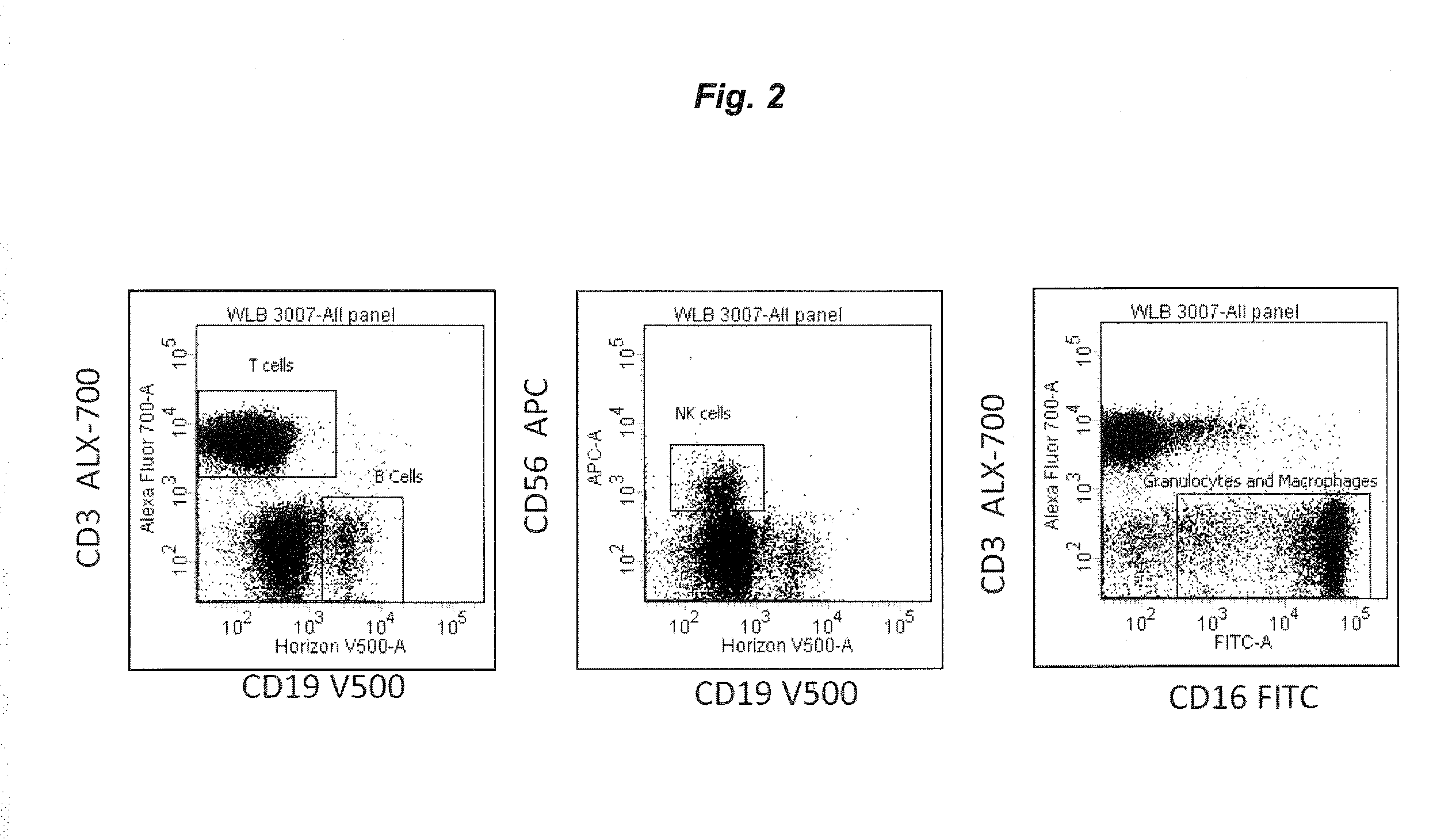Data analysis methods utilizing phenotypic properties
a data analysis and phenotypic technology, applied in the field of immunophenotypic study of the immune system, can solve the problems of reducing the amount of blood needed for immunophenotyping, time-consuming and labor-intensive to develop a reliable multi-color panel
- Summary
- Abstract
- Description
- Claims
- Application Information
AI Technical Summary
Benefits of technology
Problems solved by technology
Method used
Image
Examples
Embodiment Construction
[0026]Methods of identifying sub-populations of cells in a cellular sample are provided. Aspects of the methods include categorizing cells of the cellular sample into at least a first and second population based on a first phenotypic property. The method may further include sub-categorizing each of the first and second populations into sub-populations of cells based on a second and third phenotypic property using X detectable labels providing Y distinct signals, wherein X>Y, to identify sub-populations of cells in the cellular sample. Also provided are systems and kits that find us in practicing the subject methods.
[0027]Before the present invention is further described, it is to be understood that this invention is not limited to particular embodiments described, as such may, of course, vary. It is also to be understood that the terminology used herein is for the purpose of describing particular embodiments only, and is not intended to be limiting, since the scope of the present in...
PUM
| Property | Measurement | Unit |
|---|---|---|
| dissociation constant | aaaaa | aaaaa |
| dissociation constant | aaaaa | aaaaa |
| dissociation constant | aaaaa | aaaaa |
Abstract
Description
Claims
Application Information
 Login to View More
Login to View More - R&D
- Intellectual Property
- Life Sciences
- Materials
- Tech Scout
- Unparalleled Data Quality
- Higher Quality Content
- 60% Fewer Hallucinations
Browse by: Latest US Patents, China's latest patents, Technical Efficacy Thesaurus, Application Domain, Technology Topic, Popular Technical Reports.
© 2025 PatSnap. All rights reserved.Legal|Privacy policy|Modern Slavery Act Transparency Statement|Sitemap|About US| Contact US: help@patsnap.com



